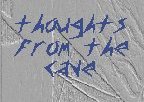

|
Review of Jacob Bronowski's THE VISIONARY EYE: Essays in the Arts, Literature, and Science |
| In this collection of essays, author Jacob Bronowski presents a variety of themes which center upon the harmony
of the arts and sciences. With headings such as The Nature of Art, The Imaginative Mind in Science, and Art as
a Mode of Knowledge, these essays begin with the premise that science, mathematics, visual arts, and literature
are all different shapes cut from the same fabric of human experience. The author's background as a mathematician,
poet, philosopher, playwright and scientist, certainly gives an edge of authority to his writing. Bronowski's artistic experience lies mainly in the field of literature, therefore it is no surprise that the majority of his points are illustrated with examples of poetry, plays, etc.. One of the first points the author makes clear is the false dichotomy between reason and the imagination. Science is traditionally associated with reason, and artistic activity with imagination. Bronowski states, however, that imagination is essentially the manipulation of mental images, and is surely the province of science as much as it is of art. He supports this unifying concept by discussing the nature of language and symbols in human thought and communication. Bronowski contends that symbols used in a mathematical equation serve the same function as symbols used in an artistic context. These types of symbols allow us to manipulate quantities and entities which are not physically present. It is tempting to ask, "If science and art are so close, then why is science perceived as being so dull as compared to art?" Bronowski explains this with a major point that he repeats throughout the book: To fully appreciate a work of art one must make the same discovery as the artist. In a sense you must "recreate" the work. Bronowski adds, "No work of art has been created with such finality that you need contribute nothing to it . . . it cannot be presented to you ready-made." In the same way science, or any activity of the imagination for that matter, must be recreated to be fully appreciated or understood. The act of human imagination is not passive. There are, of course, fundamental differences between science and art. The author explains that science reasons from particular evidence to make generalized statements, whereas poetry, as well as other arts, uses particulars to create a sense of the general. This is the type of knowledge that is communicated through the arts. Bronowski also confronts the notion that science presents limitations while art engenders freedom; this is another false dichotomy which he explodes. Science does not invent limitations, but discovers them. Thus, the artist can use this knowledge to actually achieve a greater freedom. As Bronowski puts it, "art and science belong to the everyday of human action, and are essentially human because they explore the freedom which man's intelligence constantly creates for him." In an essay entitled Architecture as a Science and Architecture as an Art, Bronowski chooses architecture as a platform for his aesthetic theory. He does so because building human dwellings so clearly illustrates the synthesis of "freedom and necessity." Shelter is a matter of necessity, but our freedom of choice allows us to go beyond utility into the realm of the beautiful. It is just this choice, this freedom, upon which hinges Bronowski's aesthetics. As he says, "Beauty is the by-product of interest and pleasure in the choice of action." In examining and experiencing works of art, Bronowski gives us two questions to ask ourselves: What was the artist trying to say? Why do it that way? Here we confront the issues of content and style. The unity between content and style is essential to the work of art. Indeed, Bronowski holds that until we see this unity we have not recreated the work. The author is also quick to point out what art is not -- it is not life, it is not reality. These statements launch a discussion of metaphor, a tool of the imagination whereby the artist uses a particular imagery to carry a general meaning. Three levels of metaphor are discussed: universal metaphor, which all humans share; the metaphorical world of a particular artist; and the metaphor as used in a specific work of art. Bronowski gives powerful examples from the poetry of William Blake, Dylan Thomas, and others, to illustrate the potential of the metaphor to shape our thoughts. Many of the points that the author makes are repeated several times over throughout the book. This is to be expected in such a collection of essays. This repetition, in fact, serves to unify a broad spectrum of thinking. Given the author's background, the literary emphasis is understandable, yet I feel that more discussion of the visual arts would have struck a better balance. When Bronowski does address the visual arts, he discusses the literary content and has little to say about the visual content in the work. I admire Bronowski's unification of science and art under the common umbrella of human imagination, but his rejection of the mystical element leaves me a bit cold. Surely there are motivations within the human soul that lie deeper than the austere crust of reason. Bronowski's own literary style is scholarly and commanding. I would recommend this book to readers who are comfortable with art and literature, especially poetry, and who have at least a cursory interest in the scientific. The reader should also be forewarned to carry his or her freshly sharpened intellectual machete to hack through the thickets of Bronowski's prosaic jungle. But once deep into these woods, we discover Blake's "tyger" and Thomas' "green fuse [which] drives the flower," and many other compelling examples of the pinnacles of human imagination. Gregory Eanes March 31,1993 (back) |